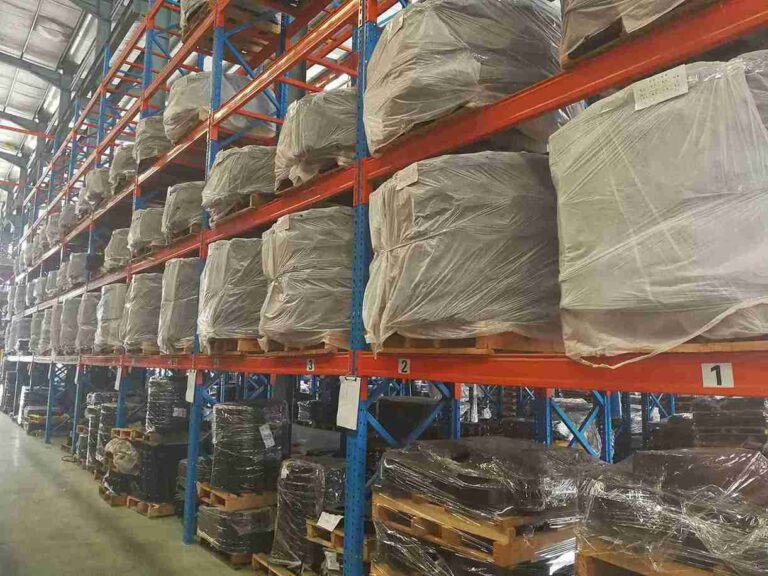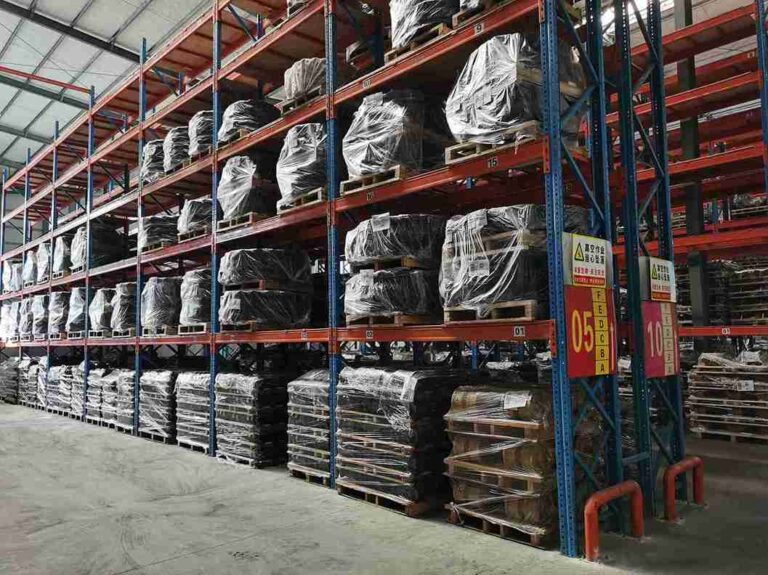📐 "First 50 Enterprise Queries Get Custom 3D Warehouse Design" Plan

Introduction
When it comes to beam racking installation, having the right beam racking tools required is not just a recommendation—it’s a necessity. Warehouse managers, logistics professionals, and installation crews must understand that beam racking tools required directly impact safety, structural integrity, and operational efficiency.
This comprehensive guide dives deep into beam racking tools required, covering hand tools, power equipment, safety gear, and specialized accessories that ensure a smooth and professional installation process. Whether setting up a new warehouse or retrofitting an existing system, knowing which beam racking tools required will save time, reduce risks, and maximize storage performance.

1. Why the Right Beam Racking Tools Required Make All the Difference
Installing beam racking without the proper beam racking tools required can lead to:
- Unstable racks, risking collapse under heavy loads
- Misaligned beams, causing pallet handling difficulties
- Premature wear and tear, reducing rack lifespan
- Safety violations, potentially leading to OSHA fines
Using the correct beam racking tools required ensures:
✔ Precision assembly for maximum load capacity
✔ Faster installation, minimizing warehouse downtime
✔ Compliance with RMI (Rack Manufacturers Institute) standards
✔ Long-term durability of the storage system
2. Essential Hand Tools Among Beam Racking Tools Required
2.1. Adjustable Wrenches & Spanners – A Must-Have in Beam Racking Tools Required
No beam racking installation is complete without high-quality adjustable wrenches. These are among the most critical beam racking tools required for tightening beam connectors, bolts, and nuts.
Key features to look for:
- Non-slip grips for secure handling
- Durable steel construction to withstand heavy torque
- Multiple size adjustments to fit various bolt types
2.2. Rubber Mallets – Protecting Your Beam Racking Investment
Unlike standard hammers, rubber mallets are essential beam racking tools required to prevent damage to beam coatings during alignment.
Best practices:
- Use for gentle adjustments without denting beams
- Ideal for seating connectors without metal-on-metal impact
2.3. Torque Wrenches – Ensuring Perfect Tightness in Beam Racking
One of the most overlooked yet vital beam racking tools required is the torque wrench.
Why it matters:
- Prevents over-tightening, which can strip threads
- Avoids under-tightening, which leads to loose connections
- Ensures compliance with manufacturer specifications
2.4. Socket Sets – Versatile Beam Racking Tools Required
A complete socket set (metric & SAE) is indispensable among beam racking tools required, allowing installers to quickly fasten rack bolts, nuts, and washers without constant tool switching.
Recommended types:
- 6-point sockets for better grip on bolts
- Deep sockets for hard-to-reach fasteners
2.5. Leveling Tools – Laser Levels & Spirit Levels
Uneven racks are a leading cause of load instability. Among the beam racking tools required, laser levels and spirit levels ensure perfect alignment.
When to use each:
- Laser levels for long-span beam alignment
- Spirit levels for quick horizontal checks
3. Power Tools – Accelerating Beam Racking Installation
3.1. Impact Wrenches – The Backbone of Beam Racking Tools Required
For large-scale beam racking installations, cordless impact wrenches are game-changers.
Advantages:
- High torque output for rapid bolt tightening
- Reduces installer fatigue compared to manual wrenches
- Pneumatic models available for industrial settings
3.2. Electric Drills with Hex Adapters
Pre-drilling holes in upright frames may be necessary, making electric drills another key component of beam racking tools required.
Best models:
- Brushless motors for longer runtime
- Variable speed control for precision drilling
3.3. Hydraulic Lift Tables – Safely Handling Heavy Beams
Lifting beam racking components manually is inefficient and dangerous. Hydraulic lift tables are essential beam racking tools required for positioning beams at the correct height.
Key benefits:
- Reduces worker strain
- Improves installation speed
- Minimizes risk of drops or misalignment
4. Safety Gear – Non-Negotiable Beam Racking Tools Required
4.1. Hard Hats & Safety Glasses
Falling debris is a real hazard during beam racking installation. ANSI-rated hard hats and impact-resistant glasses are mandatory beam racking tools required.
4.2. Cut-Resistant Gloves
Beam edges and fasteners can be sharp. High-grip, cut-resistant gloves protect hands while improving tool control.
4.3. Fall Protection Systems
For high-level beam racking, OSHA requires harnesses and lanyards—critical beam racking tools required for preventing serious injuries.
4.4. Steel-Toe Boots
Heavy beams and tools pose foot injury risks. Slip-resistant steel-toe boots are a must among beam racking tools required.
5. Measuring & Alignment Tools – Precision Matters
5.1. Tape Measures & Laser Distance Meters
Accurate beam spacing ensures proper pallet clearance. A 25-foot tape measure is standard, while laser distance meters enhance efficiency.
5.2. Plumb Bobs & String Lines
Vertical alignment prevents rack sway. A plumb bob is a simple yet effective tool among beam racking tools required.
5.3. Shim Kits for Uneven Floors
Warehouse floors are rarely perfectly level. Steel or polyurethane shims compensate for irregularities, stabilizing racks.
6. Specialized Beam Racking Tools Required for Heavy-Duty Systems
6.1. Beam Lifting Clamps
Instead of manual lifting, beam clamps attach to forklifts, safely positioning long-span beams.
6.2. Column Protectors
Prevents scratches to upright columns during installation.
6.3. Pallet Jacks & Forklifts
Moving heavy beams manually is impractical. Forklifts are indispensable beam racking tools required for large projects.
7. Optional but Helpful Accessories
7.1. Bolt Thread Lockers
Prevents loosening due to vibrations—critical in high-traffic warehouses.
7.2. Beam Connector Pins
Some systems use shear pins instead of bolts. A pin installation tool ensures secure placement.
7.3. Temporary Guard Rails
Prevents accidental beam dislodging during setup.
8. Step-by-Step Beam Racking Installation Process
8.1. Pre-Installation Planning
- Measure warehouse space
- Verify floor load capacity
- Confirm rack layout with CAD drawings
8.2. Assembling Upright Frames
- Bolt base plates to uprights
- Install cross braces for stability
8.3. Installing Horizontal Beams
- Use hydraulic lifts for positioning
- Secure with torque wrenches
8.4. Final Inspection & Load Testing
- Check beam leveling
- Apply test loads before full use
9. Common Mistakes When Using Beam Racking Tools Required
- Ignoring torque specs → Leads to weak connections
- Skipping safety gear → Increases injury risks
- Improper beam spacing → Causes pallet handling issues
- Not checking floor levelness → Results in unstable racks
10. Conclusion
Choosing the right beam racking tools required is the difference between a safe, efficient warehouse and a hazardous, inefficient one. From torque wrenches to hydraulic lifts, every tool plays a crucial role in beam racking installation.
For warehouse managers and installers, investing in high-quality beam racking tools required ensures long-term performance, safety, and compliance.
Frequently Asked Questions (FAQs)
Q1: Can I install beam racking without power tools?
Yes, but manual installation is slower and less precise. Impact wrenches significantly improve efficiency.
Q2: How often should I inspect installed beam racks?
OSHA recommends annual inspections, but high-traffic warehouses should check quarterly.
Q3: What’s the maximum height for beam racking?
Most systems support up to 30 feet, but engineered approvals are needed for taller setups.
Q4: Are used racking beams safe to install?
Only if inspected for damage and meeting current RMI standards.
Q5: Can I modify beam racking after installation?
Yes, but consult an engineer to ensure structural integrity isn’t compromised.




